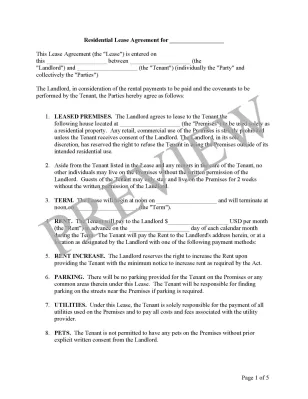Get started with your

Free Residential Lease
A residential lease is a signed agreement between the landlord and the tenant to lease a piece of residential property.
It sets out the terms to rent a residential property, the rent, and clearly outlines rights and obligations of all parties involved. It is a legally binding document that clarifies and defines the rental relationship between a tenant and the landlord.
Click Create Document and let us get you started with your residential lease. Just answer a few simple questions, revise as many times as you want and download your free PDF within minutes.

SIMPLE
STEPS
STEPS
Answer simple questions
Review and download your document
Print and sign instantly
